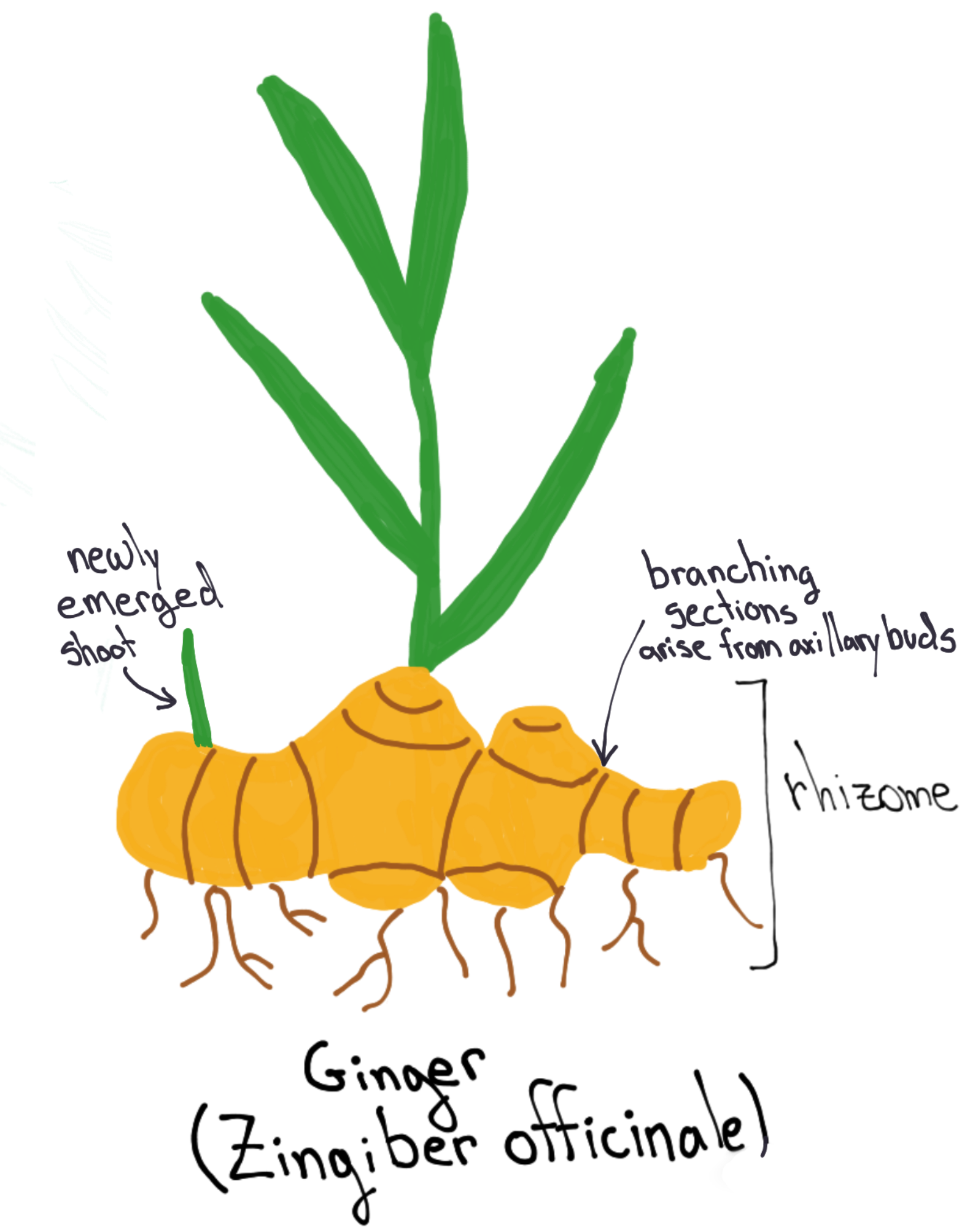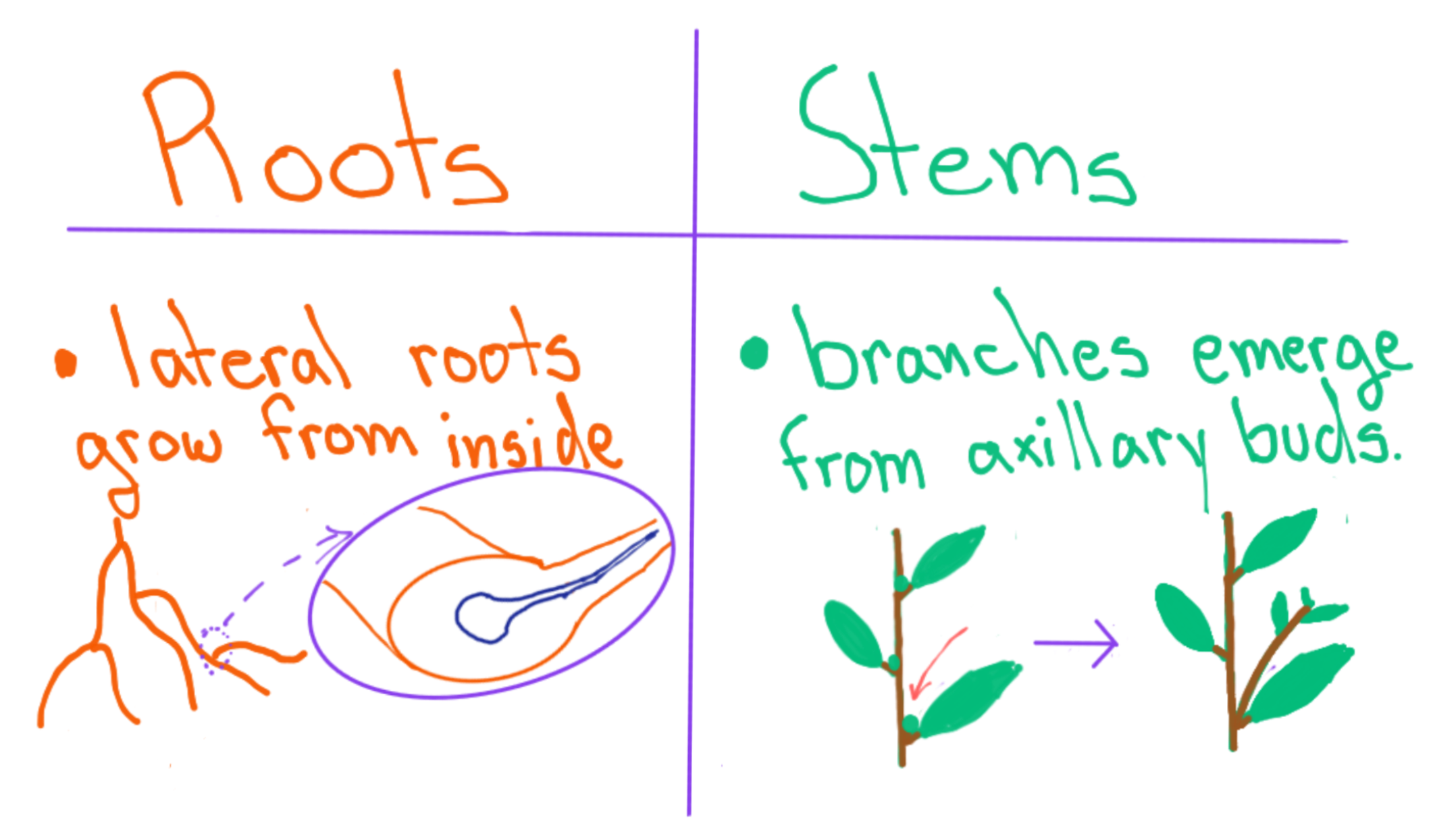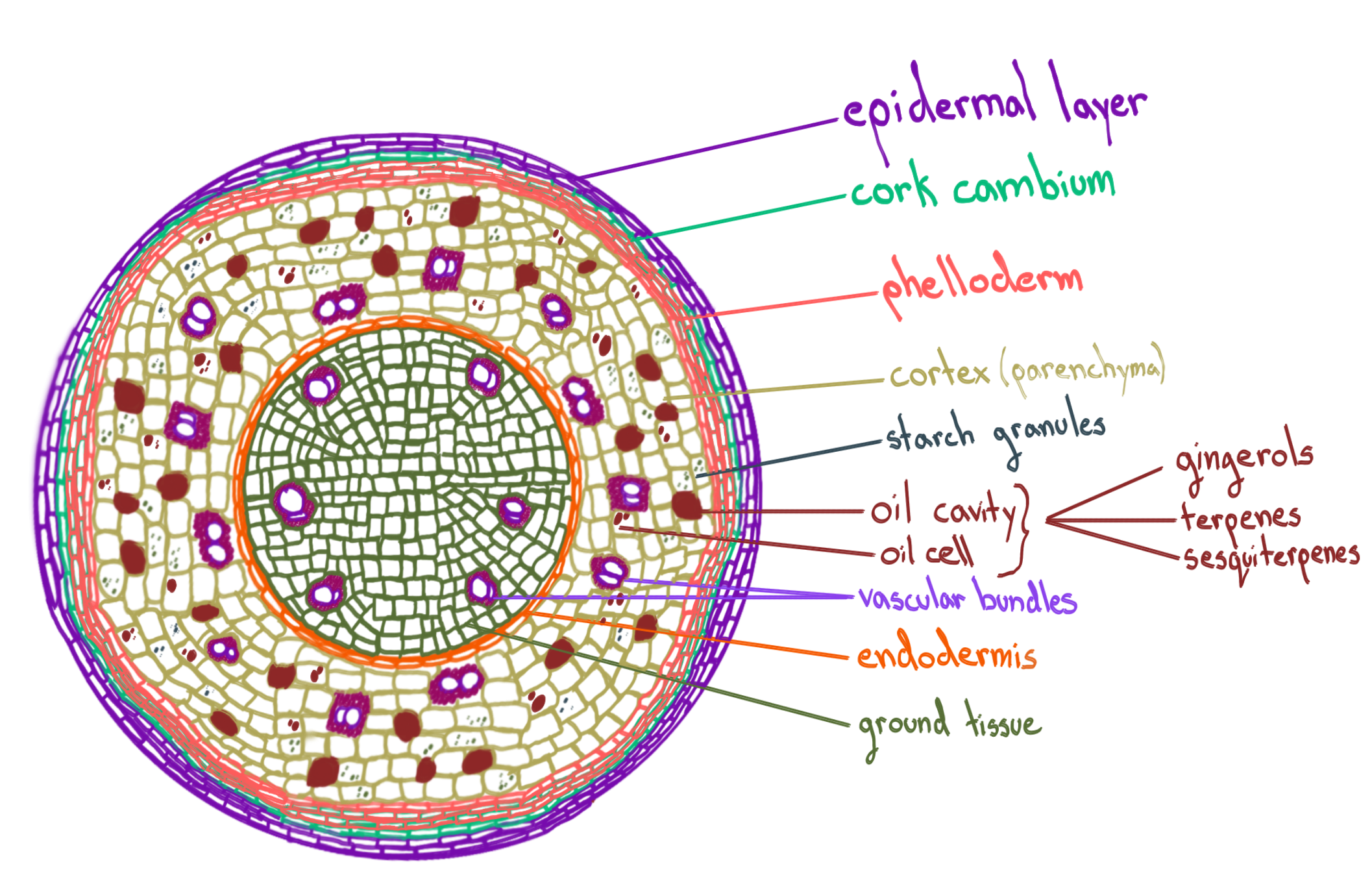Ginger and the Underground Stem
23 Mar 2022Ginger has long been an essential ingredient in folk remedies around the world. In Columbia, for example, ginger is mixed with panela to treat cold and flu. Whereas, in India and Nepal ginger paste is mixed with lemon and black salt to help alleviate nausea. In fact, ginger is a common remedy cited across many traditional medicines such as Chinese, Arabic, Ayurvedic, and African (Bode and Dong 2011). So, where did this fantastic plant come from?
Botanists believe that the ginger plant is indigenous to Southeast Asia, spreading to Europe, Africa, and the Americas starting in the fourteenth century through human trading routes. However, nowadays, ginger is primarily cultivated in Latin America and Southeast Asia, and parts of Africa, where the knobbly underground part of the plant called the rhizome is harvested and used in cooking and medicine around the world (Bode and Dong 2011).

In botany, “rhizome” is a fancy word for a stem that grows horizontally underground. A rhizome is different than a root because it is fundamentally more similar to a stem. It has branches that grow from axillary buds on the surface of the rhizome rather than from within the center, the way lateral roots emerge. Rhizomes are also able to produce new shoots, unlike traditional roots. There are many examples of underground stems in our food! Potatoes, yams, and ginger are underground stems, while carrots, sweet potatoes, and radishes are just boring old roots.

The ginger rhizome plays a vital role throughout the plant’s lifetime. Young ginger plants use their rhizomes to store starch, an important form of energy for the growing plant. As the rhizome matures, specialized secretory cells called “oil cells” start producing oil droplets. Once the oil cells are completely matured, they undergo cell death, leaving behind empty cavities fill with oil inside the rhizome (Lui et al. 2020). Dissolved in the oil droplets are a bounty of lipophilic defensive compounds such as terpenes, sesquiterpenes, and gingerols, which protect the ginger plant from pests and pathogens in the soil (Zhan et al. 2008). As the plant ages, more oil cells and subsequent oil cavities appear in the rhizome. This is why young ginger often has a milder, sweeter flavor different from more mature ginger, which is more pungent (Lui et al. 2020).

The key medicinal ingredient of ginger is a set of polyphenolics called gingerols. When gingerols are subjected to heat or drying, they lose an OH group and are converted into shogaols, which have a more pungent scent and taste. This explains why dried or cooked ginger often has a stronger gingery taste (Johnson et al. 2020).

Both gingerols and shogoals have been studied in their purified form and are reported to act as anti-inflammatory, anti-cancer, and anti-nausea agents (Mao et al. 2019). One study even found that a 900 mg dose of dried ginger was equally effective against nausea compared to the regular dose of Dramamine, the medication often prescribed for nausea (Palatty et al. 2013). So if like me, you are prone to motion sickness, a ginger tablet may be a good idea the next time you are getting on a plane or, god forbid, a boat.
Bonus reading:
Bode, A.M. and Dong, Z., 2011. The amazing and mighty ginger. Herbal Medicine: Biomolecular and Clinical Aspects. 2nd edition.
Johnson, J.B., Mani, J.S., White, S., Brown, P. and Naiker, M., 2021. Pungent and volatile constituents of dried Australian ginger. Current research in food science, 4, pp.612-618.
Liu, H., Specht, C.D., Zhao, T. and Liao, J., 2020. Morphological anatomy of leaf and rhizome in Zingiber officinale Roscoe, with emphasis on secretory structures. HortScience, 55(2), pp.204-207.
Mao, Q.Q., Xu, X.Y., Cao, S.Y., Gan, R.Y., Corke, H., Beta, T. and Li, H.B., 2019. Bioactive compounds and bioactivities of ginger (Zingiber officinale Roscoe). Foods, 8(6), p.185.
Palatty, P.L., Haniadka, R., Valder, B., Arora, R. and Baliga, M.S., 2013. Ginger in the prevention of nausea and vomiting: a review. Critical reviews in food science and nutrition, 53(7), pp.659-669.
Zhan, K., Wang, C., Xu, K. and Yin, H., 2008. Analysis of volatile and non-volatile compositions in ginger oleoresin by gas chromatography-mass spectrometry. Chinese Journal of Chromatography, 26(6), pp.692-696.